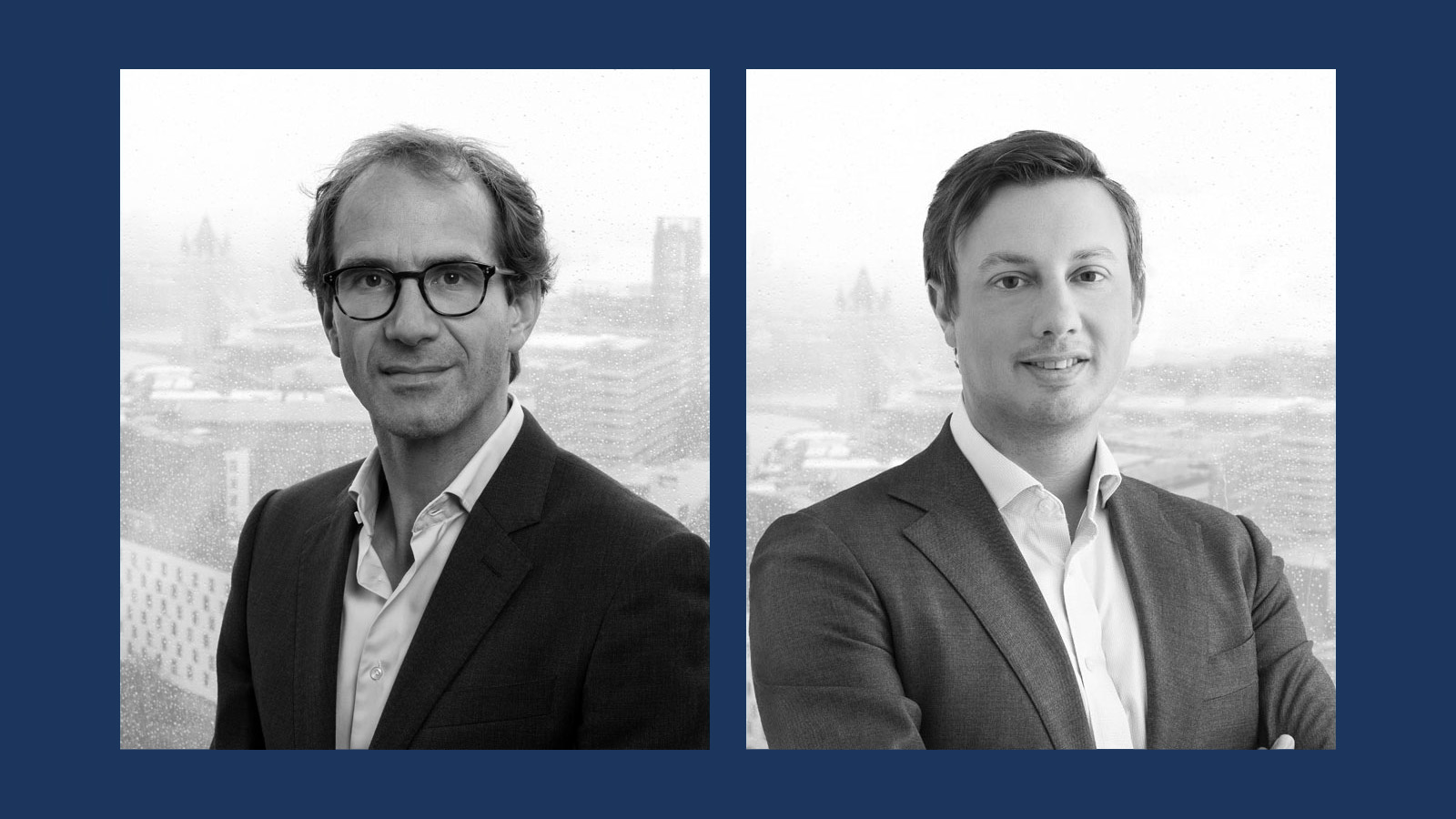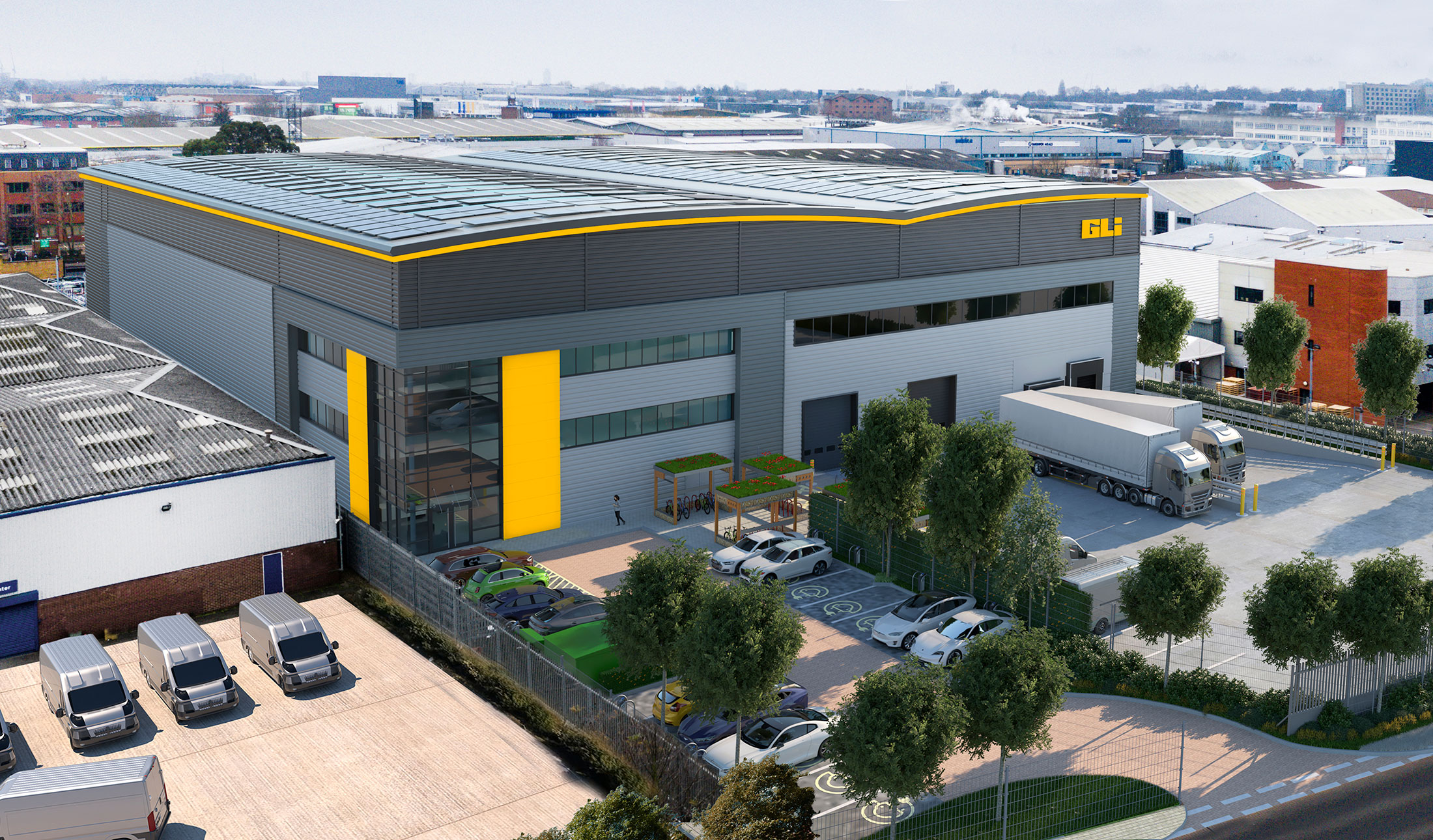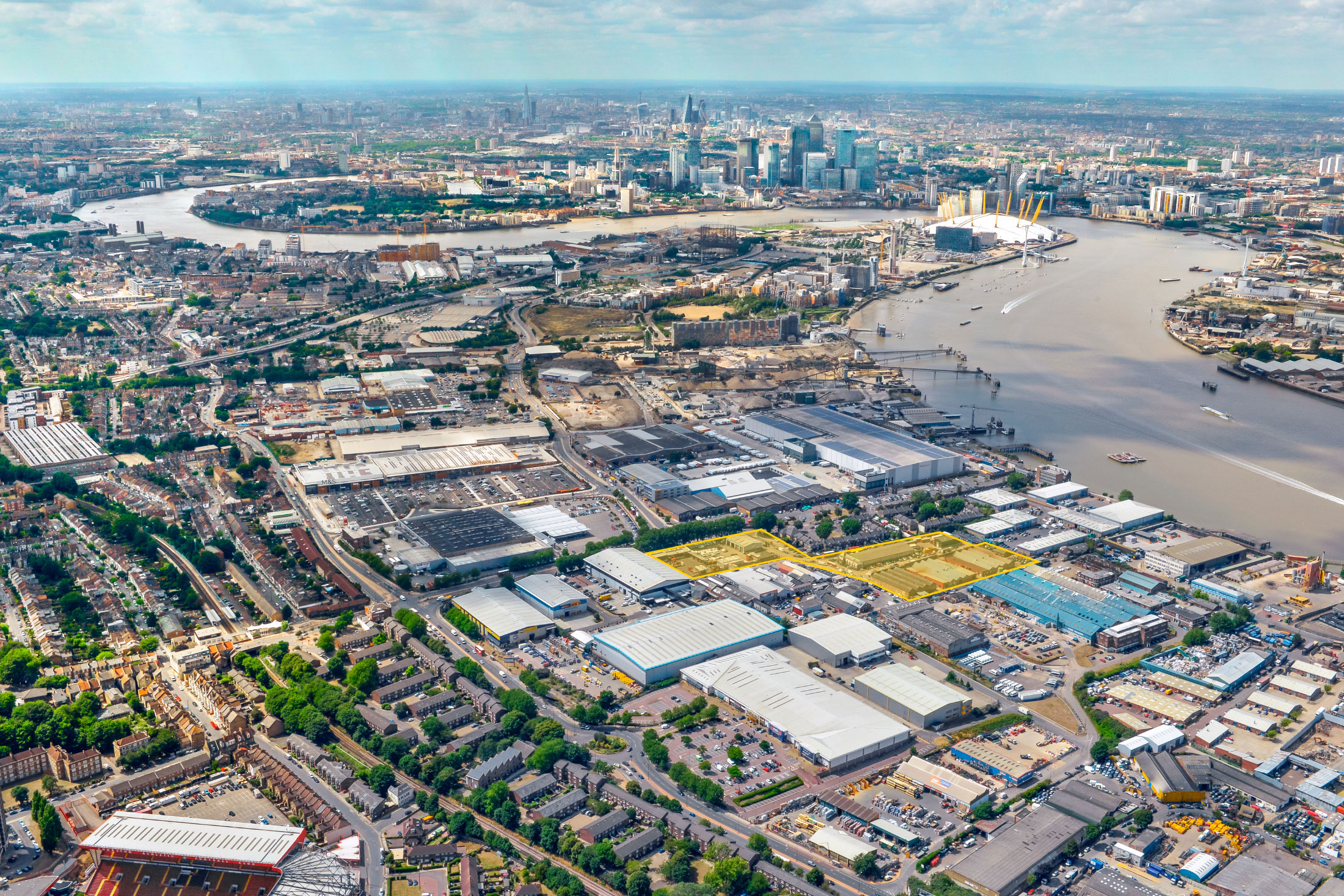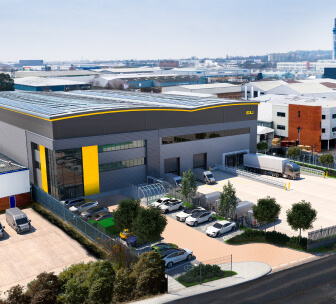
React News spoke to Luke Le Brun and George Hickman about their GLi partnership and the road ahead
After forming an urban logistics platform last year, Patrizia and KSP are mapping out their strategy to deliver ultra-sustainable urban logistics assets in London.
With €1bn of firepower to invest in prime properties across the capital, the duo’s GLi partnership has already acquired sites in Park Royal and Charlton Riverside.
React News spoke to KSP CEO George Hickman and Patrizia director Luke Le Brun about the partnership, tenant demand for London logistics hubs and their outlook for the sector.
How did the GLi partnership between Patrizia and KSP come about?
George Hickman (GH): The GLi joint venture partnership between KSP and Patrizia formed during the beginning of the pandemic in 2020. KSP was itself formed as a partnership between my family propco, Kingston Estates, and David Johnson who previously set up Chancerygate, a leading industrial developer, with his brother. David and I have been working together for about 15 years now.
After setting up KSP, we started looking for investment partners, and connected with Luke and the team at Patrizia where there was an existing relationship. Funnily enough, I think Patrizia had just written a research note that said something like, “You should consider urban logistics inside the M25.”
Luke le Brun (LB): From our side, it was a great fit because we were actively raising for a new fund at the time – the TransEuropean VII fund. We had identified a number of themes that we felt captured some of the major macro trends which we were seeing across the market, with urban logistics high on the agenda.
What we were looking for was a specialist development partner who understood the markets that we wanted to buy in and who had considerable expertise in London. KSP were perfect partners and the relationship allowed us to combine Patrizia’s macro view and their on the ground experience, contacts and development history. Fortunately, the team at KSP also had a strong track record in delivering sustainable buildings, another key consideration for us.
How do you incorporate ESG principles and practices into your development process?
LB: Right from the very beginning. What we’re trying to do is build a platform which is associated with excellent sustainability credentials, that provides future-proofed and resilient urban logistics facilities built as best-in-class, ultra-sustainable buildings.
We have a set series of sustainability requirements that we want to see in every building, and which feeds into the development team at the very beginning as core principles for any new project.
GH: We decided early on that we wanted it to be an all-electric platform. That was the first step. As a developer that is modelling from the ground up, we can incorporate the highest standards of sustainability at the start of the design and build process so we don’t have to retrofit at a later date – which the sector is finding challenging to do now, and will be even more difficult to do in the future.
From that starting point, things have progressed, and over the last 12 months sustainability has really fed into what occupiers increasingly want and demand. They’ve obviously seen their transport and power costs increase. With our embedded design process and high specification, we are able to respond to what the market needs as well as protecting the assets’ capital value in the longer term.

What sort of funding are you using to deliver the ultra sustainable urban logistics assets?
LB: Originally an initial allocation of equity was earmarked from the TransEuropean VII fund but after our first few transactions, we quickly realised the increasingly strong appetite from investors for best in class industrial assets coupled with strong occupier demands highlighted that market conditions were right to create something much more significant.
Strategically scale made a lot of sense, so we spun out the urban logistics platform, GLi, from the TransEuropean series, as we knew it couldn’t fulfill it on its own, and turned it into a standalone sidecar fund with some of our existing partners as a way to deliver on the investor’s appetite. GLi now has up to €1bn investment capacity to invest in urban logistics.
We are well-capitalised and we have committed equity that can be leveraged further should market conditions be appropriate. Given the nature of the fund and the nature of the capital, we are able to take on some debt at appropriate levels.
What does appropriate levels mean?
GH: It depends on the scheme as debt is not being used to drive all the returns. It’s just there to support the strategy.
Can you talk to us through the purchases you’ve made so far? What attracted you to them?
GH: Across London as a whole, there’s a shortage of warehouse space and an increase in occupier demand. You see that in the historically low availability levels. Rents have been increasing and will arguably continue to do so. Our strategy has been to target areas and sites where we can effectively address that imbalance.
Our first transaction was in Croydon, where the market dynamics were right. It’s a leaseback opportunity so we’ve had a little bit of time to work on the planning, which has now been submitted. That was our first one in South London and we are currently working on a second site in Croydon as well as a significant estate in Mitcham.
Our next two purchases were in Park Royal, West London – an area we know well. We know often ahead of time what’s going to be coming to the market and where the opportunities are.

You’ve got to have a feel for it. We know the dynamics of what we should be supplying for those markets. We have bought three sites in Park Royal and we are on site building the first one which is now pre-let. We expect to get planning for the second within the next month. The third one, we just bought a month ago and we’ll be putting in a planning application within the next three to four months. In total, we have around 250,000 sq ft of space currently in the pipeline for Park Royal.
LB: What we’re trying to do is get a mixture of sites in core locations. We like Park Royal because of its fundamentals. We’re also looking for sites where we can add value because of our specific skill set. That might be an occupier relationship or a particular planning or environmental challenge that we can understand and de-risk.
We’re trying to get a good spread of markets within the M25 in the west (Park Royal), north, east, and south to provide a balanced, subregional portfolio. We can use that core portfolio in Park Royal to support taking on additional risk in sites like Charlton, where there’s a little bit more work to do in order to get the site deliverable.
Given the market conditions, do you believe tenant demand will be as strong over the next year as it was in the last years?
LB: I think there are fundamental drivers of tenant demand which aren’t going away despite the current economic challenges. Occupiers are exposed to economic uncertainty as we all are. So, in the short-term, we believe that uncertainty is going to make it more difficult for tenants to commit than it was 12 months ago.
What we’re trying to do is look through that to the longer term: Try and take advantage of tenant demands supported by these big macro themes that are not going away like urbanisation, intensification and e-commerce. That’s our horizon, and hopefully we’ll ride out any volatility in the short-term.
GH: Let’s see what happens next year, but most industry people think that, yes. It is probably going to wane a little bit but equally, you can look through that to a certain extent. Our time horizons are three, four, five years. Of course, you can help yourself by delivering the right products for the right markets, which we’re doing.
Also, we’ve got staggered starts with these developments, so we’re not going to produce a whole heap of stuff that’s all coming out in the next year. We’ve got a certain amount of time diversification within that spread.
LB: Going back to the same point about if you’re producing the best-in-class, ultra-sustainable warehouses, you’d hope that that’s where the demand is going to stay. So we’re doing what we can to insulate ourselves against the current climate and the short term impact it has on market confidence.
Land values have rocketed over the past two years. How does this impact current development plans and future buying opportunities?
LB: We have capital to spend, so it clearly presents us with opportunities in locations and markets where we still think there is a strong need for these buildings from occupiers, which covers quite a lot of London. It is an opportunity we’ve managed in the right way.
Land values are coming under pressure immediately in the short-term from rises in construction costs, difficulties with debt, finance and pressure on exit yields. We have the flexibility within the platform to hold back if we don’t think the market conditions are right to invest. Also, we have the ability to step in and take advantage of some value that we may see out there.
For us, it’s about going site by site, being selective, not making any decisions with a short-term horizon but rather trying to look through longer term where we can create value. Despite the challenges in the short-term, we’ve got flexibility with our capital and our timetables, which we’re very grateful for.
There are always opportunities. There will be changes in the market within the next year and this should lead to an interesting market. It’ll be slightly more nuanced and people will be a bit more selective. But there are always opportunities.
Are rising construction costs making an impact on your plans?
GH: It’s something we’ve been very aware of and it’s something we spend a lot of time managing. We engage very early with our contractors. We make sure we try and secure our supply chain from construction materials as early as we possibly can. They have risen more than most people would have forecasted at the beginning of the platform and it restricts supply.

Rents have been going up as well. So, we still have to be able to deliver on the specification that we think the market needs. We are a development platform. It’s something we’re always going to be very carefully looking at and trying to balance. At the moment, it very much still works for us.
How can you avoid passing cost challenges onto the tenant?
LB: As a starting point, we need to understand our tenants’ businesses and collaborate with our tenants and occupiers as much as we possibly can. We can’t talk to them enough. We’ll be as open with them as we can be.
In return, we look to try and understand their challenges and the result is trying to put buildings and packages together that work for all parties. That’s what we’ve done with our first pre-let in Park Royal – a very close collaboration with the tenant that is coming in.
We’re looking to manage risk and manage costs throughout the whole process, which benefits the occupier as well as our investor. All our interests are completely aligned. There isn’t an investor versus occupier situation. So, keeping that communication going hopefully will protect them and us from having to force massively high rents to generate returns.
GH: I think it’s been creating the right kind of space, an efficient space. I think more and more you’re seeing the use of mezzanine coming in, whether that’s the landlords or the tenants.
Would you look to expand the Patrizia/KSP partnership beyond the seed portfolio?
GH: I think we’ve got a strong platform now. We have a good process now and sites are moving forward. So, we’ve got plenty to be getting on with. Equally, there may be ongoing discussions about other opportunities that might arise, based on how the market develops over the next year or two.


